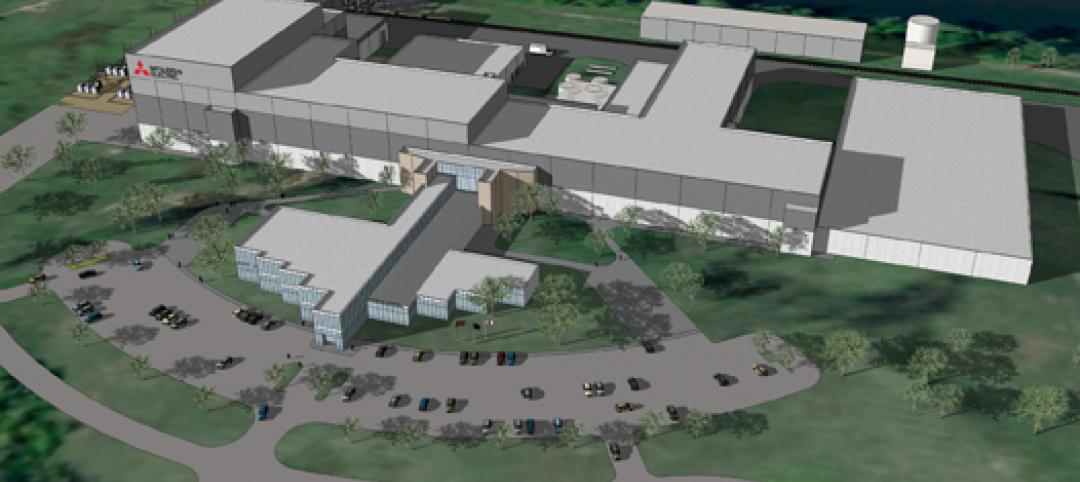Hill International, a global leader in managing construction risk, has announced that its joint venture with URS Corp. has received a blanket purchase agreement from the U.S. General Services Administration to provide construction management as agent services for the U.S. Department of State's Foreign Affairs Security Training Center (FASTC) project. The five-year agreement has an estimated value to the URS/Hill joint venture of approximately $21.8 million. URS is a 60% partner in the joint venture, and Hill is a 40% partner.
The FASTC project will establish a consolidated training center for training in a wide array of law enforcement and security disciplines within the U.S. Department of State for the protection of diplomats and U.S. embassies abroad. Diplomatic security training is currently conducted at up to 19 different, geographically separated, leased and contracted facilities nationwide. The new FASTC will be a state-of-the-art facility. It is expected to provide training for 8,000-10,000 students per year, including special agents, foreign service officers, selected foreign law enforcement and other personnel.
The URS/Hill joint venture will provide construction management services during the design, construction, and commissioning phases of the FASTC project.
"Hill is proud to be partnered with URS to manage construction of a facility that will help enhance the training of law enforcement officials and ultimately improve diplomat and embassy security," said James E. Koch, Ph.D., P.E., LEED AP, F.SAME, Senior Vice President and Director of Hill's Federal Services Group. +
Related Stories
| Apr 12, 2011
Miami courthouse design does justice to children and the environment
Suffolk Construction broke ground recently for the Miami-Dade County Children’s Courthouse, a $328 million project the firm has a 30-month contract to complete.
| Apr 12, 2011
Long-awaited San Francisco center is music to jazz organization’s ears
After 28 years, SFJAZZ is getting its first permanent home. The San Francisco-based nonprofit, which is dedicated to advancing the art of jazz through concerts and educational programs, contracted local design firm Mark Cavagnero Associates and general contractor Hathaway Dinwiddie to create a modern performance center in the city’s Hayes Valley neighborhood
| Apr 12, 2011
Mitsubishi commissions electric power manufacturing plant in Memphis
Greenville, S.C.-based design and construction firm O’Neal Inc. is providing design, engineering, procurement, and construction services for Mitsubishi Electric Power Products.
| Apr 12, 2011
BIM Grows Up: Separating Hype from Reality in a 3D World
While BIM adoption still lags in both design and construction, some enterprising owners, architects, and contractors are unlocking the potential of this dynamic technology.
| Apr 12, 2011
Metal cladding: Enhancing design with single-skin panels, MCMs, and IMPs
Single-skin metal panels, metal composite panels, and insulated metal panels can add both aesthetic and functional value to your projects, if you use them correctly.
| Apr 12, 2011
American Institute of Architects announces Guide for Sustainable Projects
AIA Guide for Sustainable Projects to provide design and construction industries with roadmap for working on sustainable projects.
| Apr 5, 2011
What do Chengdu, Lagos, and Chicago have in common?
They’re all “world middleweight cities” that are likely to become regional megacities (10 million people) by 2025—along with Dongguan, Guangzhou, Hangzhou, Shenzhen, Tianjin, and Wuhan (China); Kinshasa (Democratic Republic of the Congo); Jakarta (Indonesia); Lahore (Pakistan); and Chennai (India), according to a new report from McKinsey Global Institute: “Urban World: Mapping the economic power of cities”.
| Mar 22, 2011
San Francisco ready to test hiring law
San Francisco's new construction law, billed as the nation’s toughest local hiring ordinance, establishes strict requirements for how many work hours on city-financed projects must be completed by city residents, starting with 20% this year. It also requires that a set percentage of hours be performed by low-income workers. The requirements apply to municipal construction projects worth more than $400,000 within 70 miles of the city.












